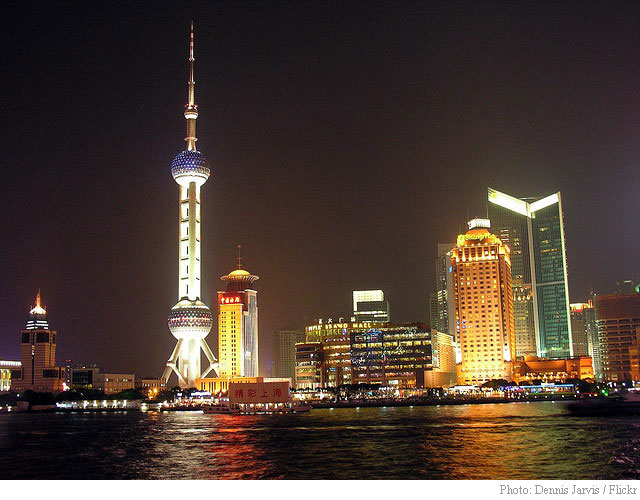
The slowdown in China’s economy, which in the first half had been one of the negative factors affecting the global economy and equity markets, appears to have come to an end, with Chinese manufacturers reporting an improvement in business conditions in June, the first improvement since last December. Demand is strengthening and destocking is accelerating. Growth in the service sector is the fastest it has been in over a year. GDP growth of 7.4% for the year now looks attainable, picking up to a 7.6% rate in 2015.
These growth rates for China will again lead the world, with only the Asian economies of India (with 5.2% growth projected for 2014 and 6.4% projected for 2015), Indonesia (5.3% and 5.4%, respectively), Malaysia (5.0% and 5.2%), and the Philippines (6.3% and 6.6%) coming close. Taiwan’s economy, with projected growth rates of 3.7% for 2014 and 4% for 2015, registered the region’s highest manufacturing Purchasing Managers Index (PMI) in June. Even South Korea, which had the lowest PMI in the region for June, looks likely to achieve growth rates of 3.7% and 4.0% over this year and next. The recovery in China and the anticipated quickening pace of the US economy are contributing to this revival of the Asia region, which will continue to outpace Latin America and Central and Eastern Europe.
The shoring up of China’s growth is policy-driven. Infrastructure investments have been accelerated. The central bank, the People’s Bank of China (PBoC), has cut the reserve requirements for some banks and is injecting funds into the economy, reversing the more restrictive policy stance followed earlier in the year. Liquidity tensions in the interbank market have eased, but risks remain in the banking system as the PBoC moves to restrict lending to the shadow banks.
Investors in China equities suffered earlier this year. The MSCI China Equity Index declined by 8.04% over the first four months of 2014, a period when the comprehensive MSCI Emerging Market Index was off by only 0.74%. Investors, sensing a turnaround in the Chinese economy, pushed the Chinese equity index up 4.03% in May and an additional 1.86% in June. Valuations remain relatively attractive, with price/earning ratios the lowest in the region.
The number of US-listed ETFs providing access to Chinese equities continues to grow – some 33 are currently listed by ETF.com. Many, however, are still quite small. Excluding leveraged and inverse ETFs, there are just nine with assets under management in excess of $75 million. The largest by far, and oldest, the iShares China Large Cap (FXI), holds only 25 of the largest Hong Kong-listed companies. Its exposure to financials is over 50%. It is up 2.43% in the past month. The second and third largest China ETFs, the iShares MSCI China (MCHI) and the SPDR S&P China (GXC), provide broad market access. The main difference between the two is that MCHI cannot hold shares listed in the US, “N-shares,” while GXC can. This is important, as the N-shares include such large internet firms as BAIDO, NetEase, and Sina. Over the past month, GXC is up 4.21%, while MCHI increased 2.88%. N-shares appear to be the reason for this difference, as the PowerShares Golden Dragon China ETF (PGJ), which holds only N-Shares, is up 6.79% over the past month. We like the facts that all included shares in PGJ must meet the tough US listing standards and that the troubled Chinese financial sector is not present.
The nine largest ETFs include two that focus on Chinese technology firms. The newest, KraneShares CSI Internet (KWEB), also has the highest tradability. It is up 9.31% over the past month. The second, Guggenheim China Technology (CQQQ), is less liquid, with a daily median trading volume of $1 million, about half that for KWEB. The latest monthly gain for CQQQ is 9.26%.
Also in this group are a small-cap ETF, Guggenheim China Small Cap (HAO), and a consumer-sector ETF, Global X China Consumer (CHIQ). Both are focused on more rapidly growing elements of the Chinese economy with limited state ownership. HAO advanced by 4.25% in the last month, and CHIQ gained 5.21%.
Finally there is the dbX-trackers Harvest CSI 300 China A-Shares Fund (ASHR), which is the first US-listed ETF that is able to directly hold China A-shares. It tracks the CSI 300 Index, which includes the 300 largest securities traded on the mainland Shanghai and Shenzhen exchanges. That construction results in the weight of financials being a heavy 40.2%. The latest one-month return was +2.40%.
Starting in October 2014, restrictions on investment flows between Hong Kong and Shanghai are scheduled to be lessened in a pilot program, Shanghai-Hong Kong Connect, which will create for the first time a feasible, controllable and expandable channel for mutual market access between the Mainland and Hong Kong by a broad range of investors. This program will mark yet another step in the slow but deliberate opening up of China’s capital account and internationalization of the renminbi and will be a plus for China equities. (Note that “renminbi” is the official name of the Chinese national currency. The often used term “yuan” is the name of one unit of the renminbi currency.)
- Bulenox: Get 45% to 91% OFF ... Use Discount Code: UNO
- Risk Our Money Not Yours | Get 50% to 90% OFF ... Use Discount Code: MMBVBKSM
Disclaimer: This page contains affiliate links. If you choose to make a purchase after clicking a link, we may receive a commission at no additional cost to you. Thank you for your support!



Leave a Reply